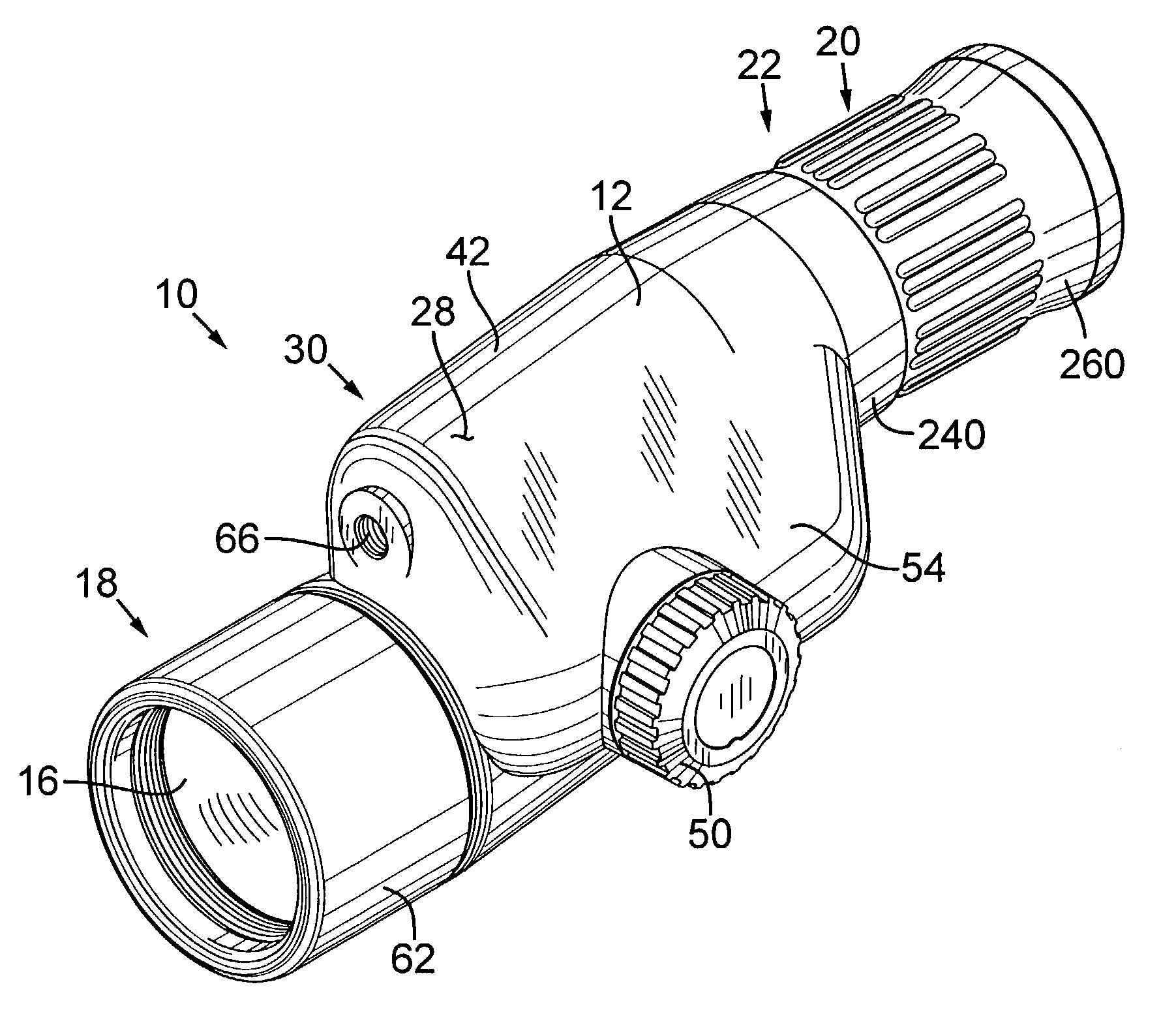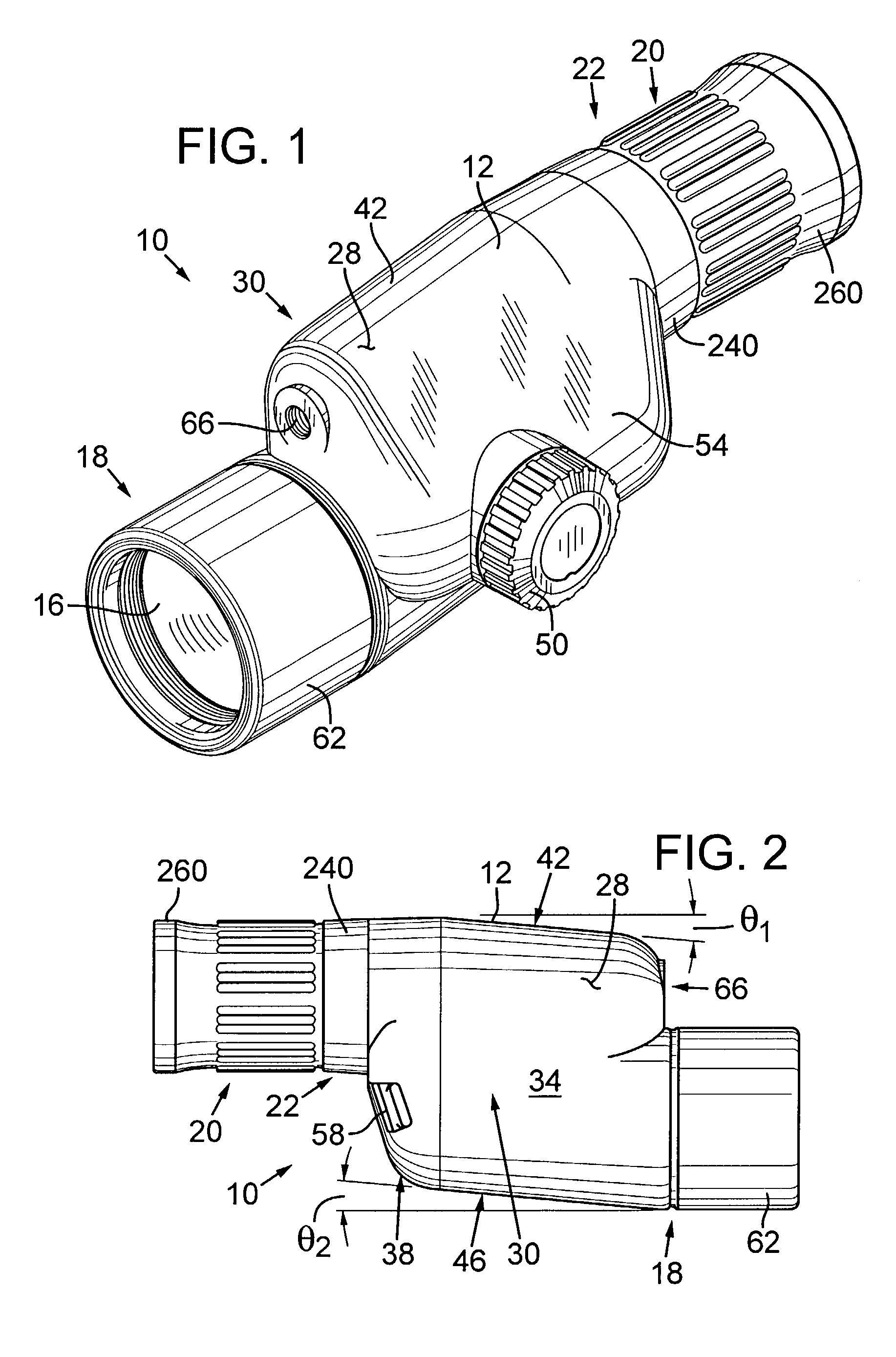Compact spotting scope with side focus control
a compact, side focus technology, applied in the field of compact spotting scopes, can solve the problems of inability to focus on targets, limited operation focusing range, and inability to portability of most known spotting scopes, and achieve the effects of convenient hand-held use, small size and light weigh
- Summary
- Abstract
- Description
- Claims
- Application Information
AI Technical Summary
Benefits of technology
Problems solved by technology
Method used
Image
Examples
Embodiment Construction
[0023]Throughout the specification, reference to “one embodiment,” or “an embodiment,” or “some embodiments” means that a particular described feature, structure, or characteristic is included in at least one embodiment. Thus, appearances of the phrases “in one embodiment” or “in an embodiment” or “in some embodiments” in various places throughout the specification are not necessarily all referring to the same embodiment or embodiments.
[0024]Furthermore, the described features, structures, and characteristics may be combined in any suitable manner in one or more embodiments. Those skilled in the art will recognize that certain embodiments may be practiced without one or more of the specific details, or with other methods, components, materials and features. In other instances, well-known structures, materials, or operations are shown in simplified form or omitted to avoid obscuring aspects of the embodiments.
[0025]FIG. 1 is a pictorial view of a compact spotting scope 10 in accordan...
PUM
 Login to View More
Login to View More Abstract
Description
Claims
Application Information
 Login to View More
Login to View More - R&D
- Intellectual Property
- Life Sciences
- Materials
- Tech Scout
- Unparalleled Data Quality
- Higher Quality Content
- 60% Fewer Hallucinations
Browse by: Latest US Patents, China's latest patents, Technical Efficacy Thesaurus, Application Domain, Technology Topic, Popular Technical Reports.
© 2025 PatSnap. All rights reserved.Legal|Privacy policy|Modern Slavery Act Transparency Statement|Sitemap|About US| Contact US: help@patsnap.com



